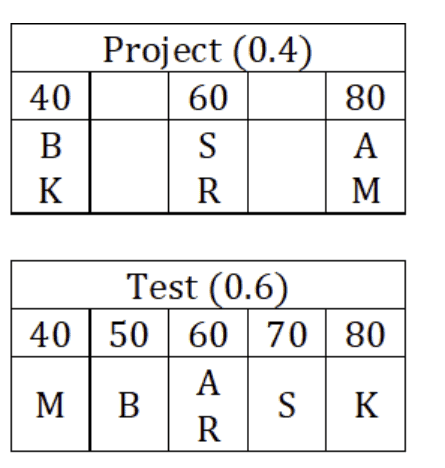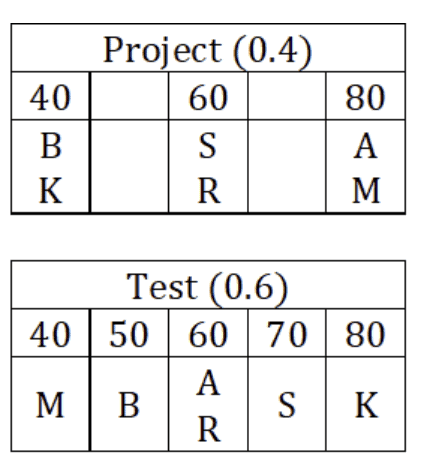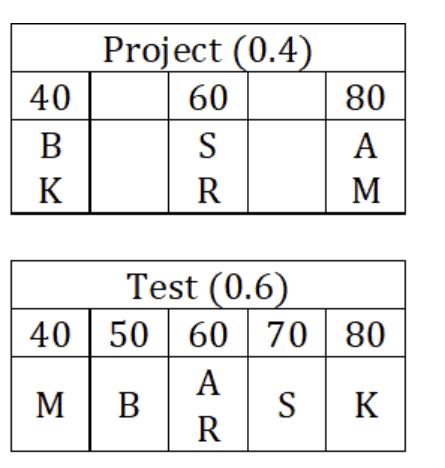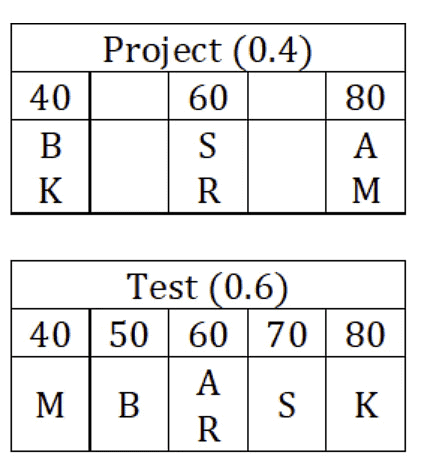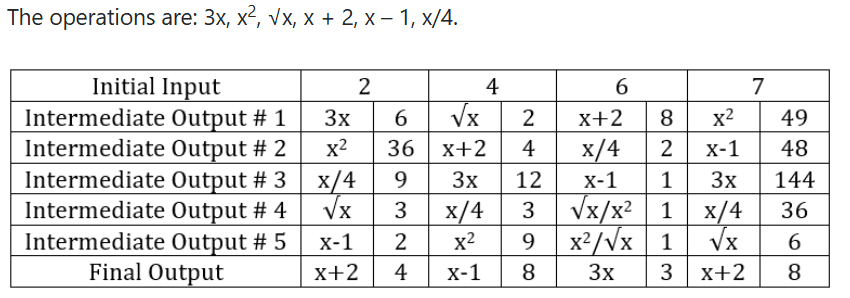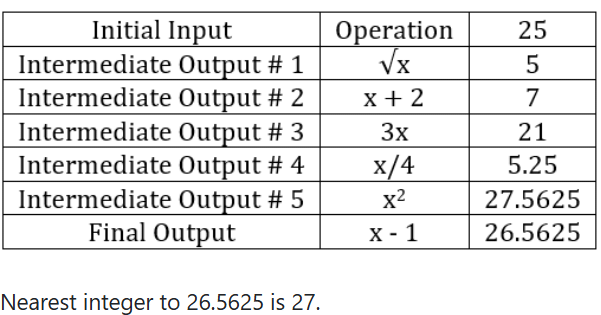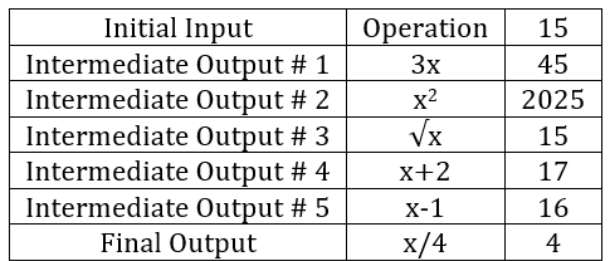Quantitative Reasoning: Solved Examples | General Test Preparation for CUET UG - CUET Commerce PDF Download
Quantitative reasoning is crucial for competitive exams because it assesses a candidate's ability to apply mathematical concepts to solve problems efficiently. The following problems will help develop your quantitative reasoning skills.
SET - 1
There are 100 beggars standing in a queue outside a temple. Every day, 100 people come to pray, and while leaving, they distribute money to these beggars. They distribute the money in the following manner.
The first person gives Rs. 1 to each of the 100 beggars. The second person gives Rs. 2 to every 2nd beggar starting with the 2nd beggar. The third person gives Rs. 3 to every 3rd beggar, starting with the 3rd beggar. This continues till the 100th person gives Rs. 100 to the 100th beggar.
Q1: What is the total amount received by the 2nd, 4th and 9th beggar?
Ans:
1st beggar received money from – 1st person 2nd beggar received money from – 1st and 2nd persons 3rd beggar received money from – 1st and 3rd persons 4th beggar received money from – 1st, 2nd and 4th persons
... and so on
We can see that the nth beggar will receive amount from those people whose numbers are factors of n.
Amount received by 1st beggar - 1 Amount received by 2nd beggar – 1 + 2 = Rs. 3 Amount received by 3rd beggar – 1 + 3 = Rs. 4 Amount received by 4th beggar – 1 + 2 + 4 = Rs. 7
... and so on
We can see that the nth beggar will receive amount equal to sum of the factors of n.
∴ Amount received by Beggar 2 ⇒ 1 + 2 = Rs. 3 Beggar 4 ⇒ 1 + 2 + 4 = Rs. 7 Beggar 9 ⇒ 1 + 3 + 9 = Rs. 13
Q2: Which person distributed the least amount?
A) 51st
B) 53rd
C) 100th
D) None of these
Ans: A)
People numbered from 1 to 50 will distribute money to multiple beggars, and the total amount they distribute will always be greater than Rs. 51.51st person will distribute Rs. 51 to only one beggar, i.e. Total Rs. 51
53rd person will distribute Rs. 53 to only one beggar, i.e. Total Rs. 53
100th person will distribute Rs. 100 to only one beggar, i.e. Total Rs. 100Hence, option A)
Q3: What is the maximum amount distributed by any person?
Ans: 100
1st person gives Rs. 1 to 100 beggars, i.e., a total of Rs. 100.
2nd person gives Rs. 2 to 50 beggars, i.e., a total of Rs. 100.
3rd person gives Rs. 3 to 33 beggars, i.e., a total of Rs. 99.
Hence, 100
Q4: How many beggars received money from exactly 2 people?
Ans: 25
Consider the solution to the first question of this set. nth beggar will receive money from as many people as the number of factors of n.
∴ Those beggars will receive money from 2 people whose number has exactly 2 factors.
Prime numbers have exactly 2 factors.
⇒ Beggars with prime numbers will receive money from 2 people.
There are 25 prime numbers from 1 to 100.
Hence, 25.
SET - 2
There are only three female students – Amala, Koli and Rini – and only three male students – Biman, Mathew and Shyamal – in a course. The course has two evaluation components: a project and a test. The aggregate score in the course is a weighted average of the two components, with the weights being positive and adding to 1.
The projects are done in groups of two, with each group consisting of a female and a male student. Both the group members obtained the same score for the project.
The following additional facts are known about the scores in the project and the test:
- The minimum, maximum and average of both project and test scores were identical – 40, 80 and 60, respectively.
- The test scores of the students were all multiples of 10; four of them were distinct, and the remaining two were equal to the average test scores.
- Amala’s score in the project was double that of Koli in the same, but Koli scored 20 more than Amala in the test. Yet, Amala had the highest aggregate score.
- Shyamal scored the second highest in the test. He scored two more than Koli but two less than Amala in the aggregate.
- Biman scored the second lowest in the test and the lowest in the aggregate.
- Mathew scored more than Rini in the project but less than her in the test.
Q1: What was Rini's score in the project?
Ans: 60
We get the following table
From the information provided. We know the project scores range from 40 to 80, with 60 being a reasonable value that fits the constraints.
Hence, 60
Q2: What was the weight of the test component?
A) 0.75
B) 0.60
C) 0.40
D) 0.50
Ans: B)
We get the following table
Amala's aggregate score is the highest, which is influenced by the weights of the components.
Based on the aggregate scores for each student, and the sum of weighted averages for project and test, the weight of the test component is calculated to be 0.60.
Hence, 0.60
Q3: What was the maximum aggregate score obtained by the students?
A) 66
B) 80
C) 62
D) 68
Ans: D)
Using the equation for Amala’s aggregate score:
Amala's project score = 80 (maximum score) and her test score = 60 (average score).
Amala's aggregate score: 68.
This confirms the maximum aggregate score is 68.
Hence, 68
Q4: What was Mathew's test score?
Ans: 40
Hence, 40
Q5: Which of the following pairs of students were part of the same project team? i) Amala and Biman ii) Koli and Mathew
A) Neither i) nor ii)
B) Only ii)
C) Only i)
D) Both i) and ii)
Answer: A)
Based on the conditions, Mathew’s score in the test must be 40 to fit the pattern of test scores.
Hence, A)
SET - 3
SET - 3
For a given input, a machine performs 6 different mathematical operations and gives a final output. The output of a particular operation becomes the input for the next operation until all 6 operations are performed. The machine always performs the same 6 operations, but the order of operations may change for different inputs.
The table below gives the initial input and outputs for each intermediate step
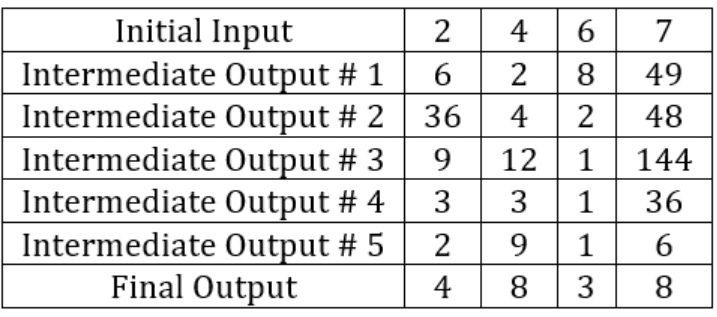
Q1: Which of the following cannot be a function performed by any operation?
A) x + 2
B) x - 1
C) √x
D) 2x
Ans: D)
For all operations, the input/output must follow specific rules to ensure that intermediate outputs are integers,
Hence, option D)
Q2: When the input is 6, what is the function performed by 3rd operation?
A) x + 2
B) x/4
C) x - 1
D) Cannot be determined
Ans: C)
Hence, option C)
Q3: When the input is 9 and the order of operations is same as when the input is 4, what is the final output? (Round off your answer to the nearest integer.
Ans: 27
If the order of operations remains the same as when the input is 4, we can calculate the final output for 9. This needs to follow the operations step-by-step for 9.
Hence, 27
Q4: If the sequence of operations is same as when the input is 6, for which of these inputs is one of the outputs definitely not an integer?
A) 18
B) 12
C) 38
D) None of these
Ans: B)
Based on the sequence of operations when the input is 6, we can deduce whether the outputs are integers for each input. For input 12, one of the outputs would definitely not be an integer.
Hence, B)
Q5: If the initial input is 15, and every intermediate output (including the final output) is an integer, what is the maximum possible value of intermediate output #2
Ans: 2025
To maximize the output after 2nd stage the first two operations should be x2 and 3x.
Case 1: x2 followed by 3x. Output after these two operations will be 675.
Case 2: 3x followed by x.2Output after these two operations will be 2025.Of the two 2025 is greater.
But we need to make sure that all the subsequent outputs are also integers.This is possible as follows:
Hence, 2025
|
164 videos|626 docs|1131 tests
|
FAQs on Quantitative Reasoning: Solved Examples - General Test Preparation for CUET UG - CUET Commerce
| 1. What is Quantitative Reasoning in the context of the SSC CGL exam? |  |
| 2. How can I improve my Quantitative Reasoning skills for the SSC CGL exam? |  |
| 3. What types of questions can I expect in the Quantitative Reasoning section of SSC CGL? |  |
| 4. Are there any specific formulas I should memorize for the Quantitative Reasoning section? |  |
| 5. How important is time management in the Quantitative Reasoning section of SSC CGL? |  |

